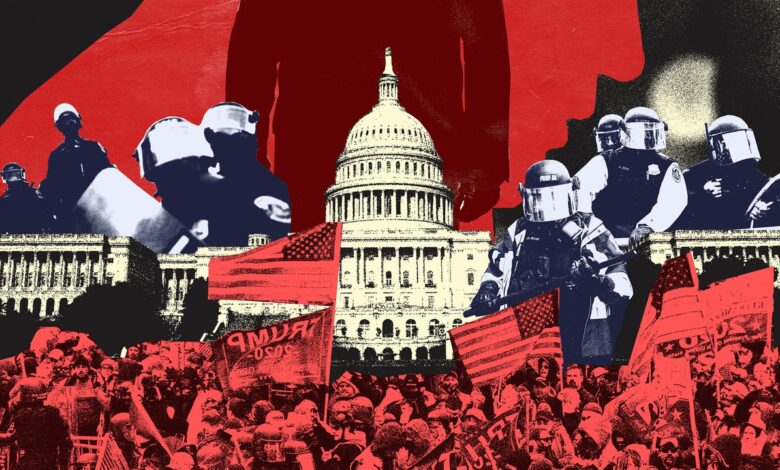“It was horrible”: A situation room officer’s harrowing account of an uprising in America

Stiegler said the situation was “surreal.” But he’s wary of revealing more. “I have to be careful,” he told me. “I’ve given a lot of testimony and I don’t know where the line is.” I venture that one of his contacts must be the Secret Service. He paused then said, “That’s fair.” That means he’s getting real-time updates live from the chaos in the Capitol building, as the mob surges through the halls.
The most painful part?
“We almost lost the vice president,” he told me. He stopped, then looked up at the ceiling, trying to calm himself down. “Screaming, screaming. Different things we heard that day.” Stiegler is a young man with a cheerful disposition, but when he talks about January 6, before my eyes, he seems to age.
“It’s terrible,” he said quietly. “There was a group of us on duty that day and we still don’t know how to handle it…We don’t know how to talk about it. And we don’t know who to talk about it with. There are so many things we witnessed that day that we cannot recount. And how do you deal with that?”
In the six decades since the Situation Room was founded, it has become the crisis center of America’s disasters. The men and women of the Situation Room faced nuclear scares, the assassination of a president and the attempted assassination of two others. They stayed at their posts on 9/11, when the White House was targeted by terrorists. And they have tracked and analyzed American wars that have cost hundreds of thousands of lives and billions of dollars. But never before have they faced an uprising against our government, inspired by the president of the United States.
If the election certification had not passed, Stiegler told me, “I think we could have seen a fractured, collapsed institution. I think many of us will leave.” These employees serve the residents of the White House, but they work for the president, not the president. “Your loyalty to your country supersedes your loyalty to your role,” Stiegler said. That dueling loyalty has never been tested like this.
By the time the mob stormed the Capitol on January 6, Mike Stiegler had served in the Situation Room for a year and a half. It was an exhausting time and Stiegler was near the end of his emotional rope.
He reported to work at the White House at 4:20 a.m. on January 6, and for the next 12 hours he endured the madness of watching a sitting president encourage a coup, wondering if the vice president would survive the day and not being sure if he would. whether America’s 245-year democratic experiment has come to an end.
“It was surreal,” he said, “in the sense that you saw complete chaos happen in the Capitol, and we just witnessed all this madness. And you walk off the White House grounds and nothing happens. It was empty at that time. There was no one on the streets, because it was all blocked off at that time…It was truly a ghost town.”
Several Boardroom employees who had just finished their shifts walked slowly toward their cars. “We just stood there for a few minutes,” Stiegler recalls. “It’s like when you mix cold water with hot water, it takes a second for it to come together to the same temperature. It took us a minute to feel like, Okay, okay. Get on the car. Keep moving. Let’s get out of here.”
I asked Stiegler what he said to his wife when he got home. “I don’t, I don’t think…” he said, then had to stop. “Now you’re making me cry.” He took a breath. “I don’t think we actually said anything…I still don’t know what to say about half of it.” He recalled that his wife asked him if he wanted to watch the news. “I said, ‘No, don’t turn it on. I can’t right now. I can not do it.’ And I had to come back the next day.”




